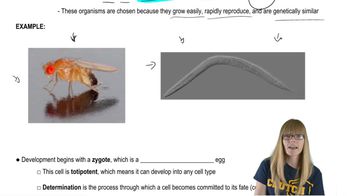Select one of the hereditary conditions from either the RUSP core conditions list or the RUSP list of secondary conditions and do some online research to find the following information:
The duration of treatment
 Verified step by step guidance
Verified step by step guidance Verified video answer for a similar problem:
Verified video answer for a similar problem:



 6:51m
6:51mMaster Human Genome Composition with a bite sized video explanation from Kylia
Start learning